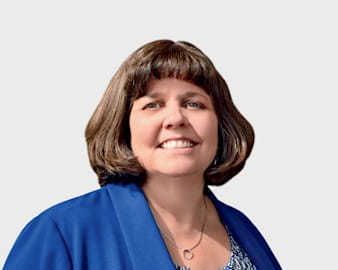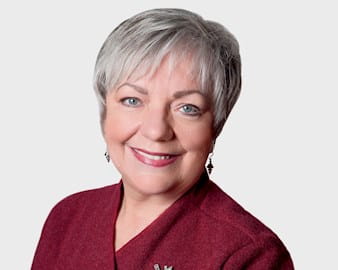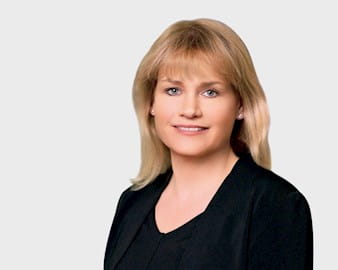
Chicago’s cultural institutions have educated generations of visitors. Meet the alumnae charged with ensuring their financial health.
- By
- October 10, 2017
- Social Impact

Besides being three of Chicago’s most iconic museums, the Shedd Aquarium, the Adler Planetarium, and the Museum of Science and Industry have something else in common: their CFOs are Chicago Booth alumnae. Joyce Simon, ’75; Marcia Heuser, ’87; and Rose Fealy, ’89, each spent at least part of their careers working at for-profit corporations before assuming their respective roles at the Shedd, the Adler, and the MSI. Chicago Booth Magazine brought the three women together to talk about the complexities of balancing the books at a world-class museum, the rewards of contributing to the mission of each organization, and how more women can join them in the C-suite.
Chicago Booth Magazine: What are some of the differences between being CFO at a major cultural institution and another type of business?
Rose Fealy: The biggest difference for me in this type of nonprofit is that we have, at least at the MSI, about 50 percent of our revenues coming from our guests and 50 percent coming from philanthropic sources. We’re constantly balancing a guest-centric business, where we’re dealing with the public, with a mission-oriented business, where we’re supporting teachers and schoolchildren and helping them grow, but they’re not necessarily paying for that set of services.
Joyce Simon: I always tell people that CFOs of nonprofits do everything that for-profit CFOs do. We still worry about enterprise risk. We still deal with rating agencies in many instances. One difference—perhaps more with aquariums—is that we have a slightly different financial model than most museums and other nonprofit cultural institutions. In our model, which is typical of aquariums, about 75 percent of our revenues are earned, so we’re very much running a business. Aquariums are capital intensive. The buildings are difficult and expensive to run. We worry about life support, as many businesses do, but we have to worry about two kinds: keeping the people alive and keeping the animals alive. There are some real complexities that you have to learn.

Rose Fealy: One of our biggest challenges is the need for capital investment, particularly in our facility, an 1893 building. People are inspired to donate to education programs and exhibits, but replacing an electrical system or an elevator isn’t nearly as fun.
Marcia Heuser: That is a challenge. Deferred maintenance is huge, and I don’t think it’s unique to cultural institutions. You hear universities talk about it as well, but when resources are tight, you look to operations.
Rose Fealy: The thing that is unique about our business is the need to keep content fresh and to constantly think about our marketing message to the public. We want people to see us as a growing, viable organization and not just somewhere they went as kids. It’s a constant need to upgrade our exhibits, come up with unique approaches. Our CEO likes to say that, unlike the art museum whose assets are appreciating, ours are depreciating fast. We’re constantly faced with the challenges of what it costs to build something cutting-edge such as the [MSI’s current] Robot Revolution exhibit. It’s expensive.
Joyce Simon: My personal mission, and my reason for being at an institution such as the Shedd, is to help good people do good things. It’s a constant balance as to how you allocate resources between formal education, the museum experience, scientific research, and outreach. It’s a tough call. It’s not as easy as doing an ROI.
Marcia Heuser: At the Adler, there is so much passion among the staff to do good that there is a desire to say yes to everything. Being focused with our resources and looking where we can have the most impact is a real challenge.
We want people to see us as a growing, viable organization and not just somewhere they went as kids.
CBM: What are some of the trade-offs you’ve made? For instance, swapping a lower salary for, potentially, a better work-life balance?
Joyce Simon: I have to chuckle at the idea of work-life balance. There are a lot of people who think that it’s really easy and short hours working at a nonprofit. In fact, one of the things that I get most frequently is, “Oh, your job must be so much fun.” And a second thing is, “Is it full-time?” My answer is, “No, it’s not full-time. It’s a job and a half.” This is true with what I see of all of my colleagues. Nonprofit CFOs are some of the hardest-working people in the city. We’re all similar in that we really believe in what we do, what our institutions do, and how important they are to the city, the state, and the planet. It’s an emotional commitment, certainly much more than a financial one.

Marcia Heuser: Yes, there is a financial trade-off. I do think, though, there is a true reward in feeling like you’re making a difference. We work hard, but it’s satisfying most days. At least at the Adler—and I am pretty sure this holds true for others—we’re all working executives. We roll up our sleeves and help solve things. We don’t necessarily have teams of 25 to tackle issues, so we have to be right in there helping to come up with effective and innovative solutions to problems. It’s kind of fun.
Joyce Simon: It’s work, but again, as Marcia said, there are great rewards. When I’m having a bad day, I can get up from my desk and go look at animals and young children enjoying them. Then you realize this is what makes it all worthwhile.
Rose Fealy: From my perspective, it’s a great finish to my career, being able to give back in some way, and also being very, very challenged on the diversity of the projects that we undertake.
There is a true reward in feeling like you’re making a difference.
CBM: How can we encourage more women to join you in the C-suite?
Joyce Simon: I think you need to encourage the business world to accept diversity, gender differences, and flexible schedules. There is still unconscious bias. The flexibility will come about as more men demand it and demand better life balance, but there is still a problem with unconscious bias.

Rose Fealy: I do see that many of the roles in business today assume you have a stay-at-home spouse, whether you are male or female. I have worked in companies where many of the senior-level women had stay-at-home husbands, who were taking care of the house and sometimes taking care of children.
Marcia Heuser: I see a change in attitudes in terms of what is important to people in the 20- to 35-year-old range today versus what my generation simply accepted. They’re demanding work-life balance. I credit this generation for just saying, “These are the terms that we will work under.” Do you see these changes, Joyce and Rose?
Joyce Simon: I do.
Rose Fealy: Yeah, I absolutely do.
—By Deborah Ziff

An alumnus, a professor, and a student share how they think K-12 school systems can use lessons from the pandemic to evolve.
What is the Potential for Innovation in K-12 Education?
Amid a two-decade career at the firm where he started as an analyst, Kapoor, ’04, remains committed to the value of independence.
Morningstar CEO Kunal Kapoor Is All In for Investors
Buoyed by the power of social media, alumnae Monica Garrido, ’04, and Megan Morgan, ’06, help Syrian refugee children in crisis.
Socially Conscious Networking